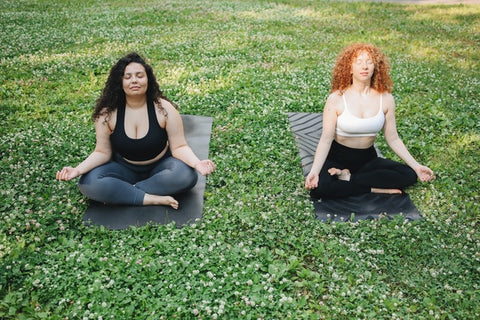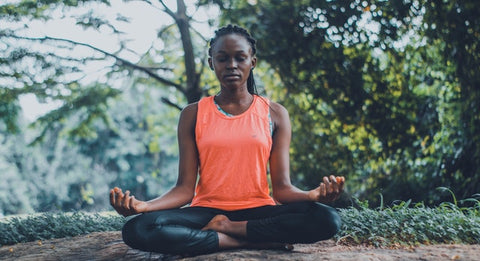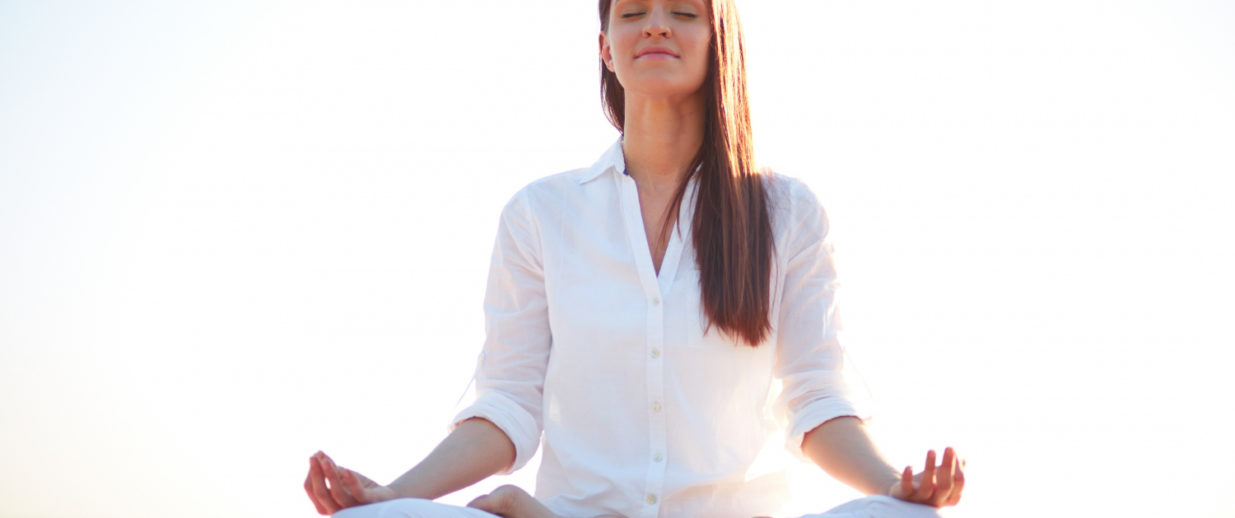Did you know that 26% of adults in the UK have tried meditation as a form of therapy to enhance their well-being? Trying a form of meditation is a popular resolution for the new year, allowing you to get the many benefits the practice can offer.
If you have ever wanted to know how to meditate, there is no better time to do so than as we head into the new year.
Let us look at why the regular practice of meditation is so beneficial and focus on some meditation tips to make the process easier.

Benefits of Meditation on Physical Health and Mental Health
Meditation practice can offer a wide variety of benefits that range from the psychological to the physical. Let us dive into some of the different reasons meditation can have an impact on your life.
Reduces Stress
Meditation is well known to help reduce stress levels. The body responds to mental and physical stress with the stress hormone cortisol. Cortisol can disrupt sleeping patterns, increase depression, and even increase blood pressure.
In a study, meditation practice helped reduce stress inflammatory response. It can also help alleviate symptoms of irritable bowel syndrome, post-traumatic stress disorder, and many other stress-related conditions.
Helps Deal with Anxiety
Because meditation helps reduce stress, it also lowers anxiety levels. Studies show that people who had generalized anxiety disorders benefited the most from meditation practices, especially loving-kindness meditation and mindfulness meditation.
It can also help cope with job-related anxiety. In a recent study, researchers found that a group of employees who engaged in an 8-week mindful meditation practice saw a reduction in their stress levels and had increased feelings of well-being and improved mental health.
Lengthens Attention Span
In the day and age of smartphones, attention spans have shortened. One form of meditation that can help with strengthening and lengthening attention spans is focused-attention meditation.
A study found that people who practised meditation regularly performed better on visual tasks and had a greater attention span than those who did not.
Meditation can even reverse patterns that lead to short attention spans, mind-wandering, and worrying.
Benefits Your Heart and Blood Pressure
Meditating in a regular manner can help reduce the risks of cardiovascular disease. It positively affects blood pressure and can strengthen the muscle.
People who suffer from high blood pressure can greatly benefit from meditation since it lowers it naturally, without the need for medications.
Improves Sleep
Keeping a regular meditation schedule has been shown to improve sleep. It allows you to stay asleep for longer periods of time and can reduce the racing thoughts that can cause insomnia.
Not only does it help reduce racing thoughts, but it also relaxes the body, making it easier to fall asleep.

How to Meditate
With all of the benefits meditation can offer, learning how to meditate can be a great resolution. People often worry about not knowing if they are beginning correctly, and that can be a source of anxiety you do not need.
There are a number of different tips that can make it easier for you to begin your journey into meditation.
Meditation Tips: Have No Expectations
If you go into your first meditation session expecting cosmic revelations, you are bound for disappointment. Meditation is a practice that takes time and patience. However, with all of the health benefits both on your mental health and physical health, patience is worth it.
Going into the experience without expectations of how you will feel afterwards or how much your health and well-being will improve will allow you to actually reap those benefits.
Choose a Time for Your Meditation Practice and Stick to It
You are training yourself and your mind when you meditate. If you choose a time of day to meditate, you are making the practice a habit and increasing the chances that you will continue it.
Many people choose to tack meditation on to other habits, like drinking a cup of coffee in the morning. This allows meditating to become a part of your daily routine.
It only requires a few minutes of meditation as a daily practice to start feeling the benefits of meditation, it does not need to take up a large chunk of your day.
Have a Designated Meditation Space
When you choose a meditation space, you are training your mind and your body to associate that place with peacefulness and mindfulness. It can make it much easier for you to slip into the meditative state when that is the case.
Be sure to keep the space clean and without clutter. You do not want to feel constrained or uncomfortable during your meditative practice. Be sure to designate this space a phone-free zone.
Get Comfortable
If you feel uncomfortable as you meditate, you will never achieve the relaxation you need to get to the right state of mindfulness. There are special cushions that are made especially for meditation which allow you to get the comfort and support you need. Buddalife offers a range of meditation cushions that have a buckwheat hull interior that supports your spine, hips and joints as you sink into your daily meditation practice. Buckwheat also allows your body to stay cool while you meditate as the air can easily pass through the buckwheat, keeping the cushion ventilated.
To further promote a relaxing environment whilst you meditate, we have implemented biocrystal technology into the Buddalife meditation cushions which reduces stress levels, improves the quality of your sleep, reduces muscle tension, regulates oxygen levels, and decreases the impact of EMF (Electromagnetic Fields). This allows you to boost the effects of meditation on your body allowing you to truly discover an improved quality of life.
It can also help to burn incense or have a candle designated for meditation. Our sense of smell is one of our strongest ones, and having a particular smell tied to a specific activity can help.
Give Your Mind Time to Wind Down
Reaching a meditative state is something that does not happen instantly. You have to give your mind time to wind down. It is important to remember not to jump into meditation right after a workout or something physically strenuous as your heart rate may be high and it can be difficult to get into a relaxed state.
Begin the meditative process with deep breaths. Deep breathing triggers a relaxation response in the body which is the opposite of the body’s fight-or-flight response. Deep breathing acts as a mindfulness-based stress reduction technique and it can allow you to sink into a productive meditative practice.
When you begin actually meditating, your breathing will return back to normal. It is important to monitor your breathing throughout the meditative process, and there are even mindful breathing techniques you may want to consider.
Avoid Moving Too Much
Moving and fidgeting during meditation can make it more difficult to reach the state of mindfulness you want. It is very common to want to move around as you meditate. If you see that you are in pain or uncomfortable enough to cause distraction, you should try to switch positions.
Some forms of meditation allow you to meditate while lying down or even walking, so take time to consider the different options.
Wear Appropriate Clothes During Daily Meditation
You want to make sure what you are wearing does not get in the way of the meditative process. You do not want to feel hot or cold, and you want to avoid constricting clothes. Clothing that is free and loose tends to be the best option for meditation since it allows you to move around as you need to. Clothing can change based on different types of meditation. If you are seated at home and trying mindfulness meditation, yoga leggings or pants and a light cotton top are a great option. However, if you are practicing walking meditation, layers might be needed if you are carrying this type of meditation outdoors.
Sit Correctly
If you meditate sitting up, you want to know how to sit correctly. Most people slump and do not have the proper sitting posture, which can influence your meditation.
You want to sit straight but comfortably, so you do not feel rigidity. If you feel pain or discomfort, try to find a posture that is more comfortable. Regular meditation practice in an uncomfortable position could have negative effects on your muscles and joints. Meditation cushions such as the Buddalife meditation cushions can offer support to your joints, as can chairs.
Keep your hands open and place your palms on your knees. You do not want any of this to feel rigid or uncomfortable. If you sit on the floor, you can cross your legs. Sit whatever way you feel is most comfortable for your body and whatever position puts less of a strain on your body.

Close Your Eyes
We engage with the world with our eyes, so keeping them open can make it more difficult to meditate. You do not want to clench them shut but instead close them lightly. Some people even leave them half-open.
Try different options and see what works best for you.
Keeping your eyes closed won’t work with every form of meditation, such as walking meditation. In cases like this, it may be useful to listen to some calming music while walking to try to ease any distractions.
Dealing With Intrusive Thoughts During Mindfulness Practices
Intrusive thoughts will be part of the meditation process at the start, and you want to know how to tackle them. The mind tends to cling to negative thoughts and oscillate between the past and the present, which can be very distracting.
Remember that the more you try to push something away from your mind, the more it clings to it, so the best thing to do is to allow the thoughts to sit where they are without engaging with them.
Do not focus on clearing your mind, either. The more you think about doing that, the more impossible it becomes. Let your thoughts exist.
While dealing with intrusive thoughts during your meditation, try focusing on the bodily sensations and physical sensations happening in your body as you take deep breaths. Allow your mind to feel every part of your body, from the tips of your toes, right through to the top of your head. This can help redirect negative thoughts and can help you focus on the wonders of your body.
Reintroduce Movement Slowly
Once you have finished meditating, you want to slowly return to your daily life. You do not want to leap into any immediate movement because that can jolt your body into a stressful response.
Begin by moving your fingers and toes in a gentle manner, slowly moving up to your arms and legs. You want to roll your shoulders and move your head from side to side, as well.
Begin Your Meditation Journey
There is nothing stopping you from starting the journey down the healing path of meditation. This coming year, stick to your resolutions when you learn how to meditate.
If you would like more meditation tips or want to see our line of meditation cushions, contact us today


